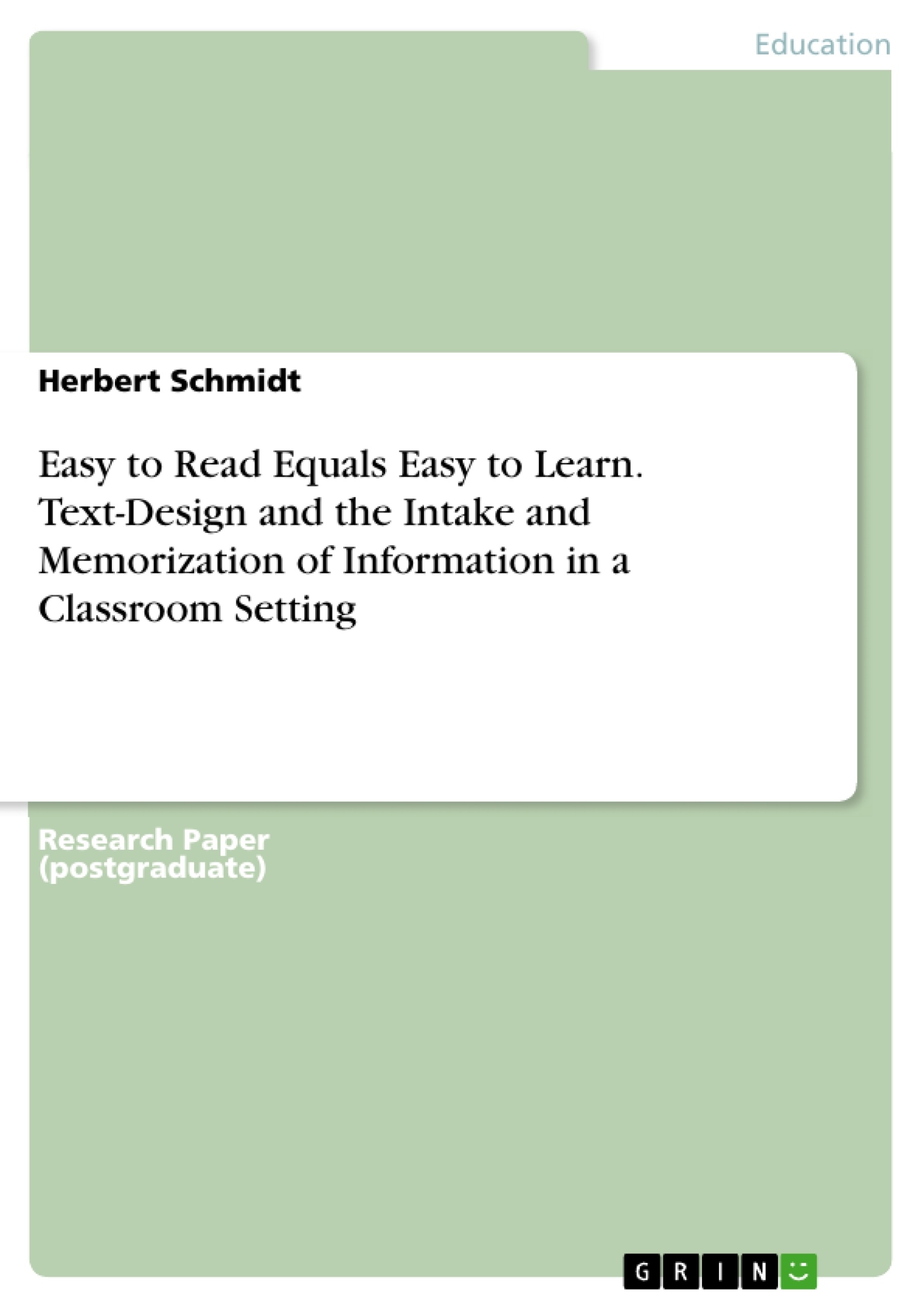This study examines wether a well designed text aids pupils or students to read and understand the text and increase or ease the information intake. It is aimed to offer a guideline on how a text should be designed to enhance the learning effect and to offer the easiest and most efficient design for a student to work with.
The study was conducted in several classrooms of a vocational school in Austria. Given the age bracket which is centered roughly around 17 and 18 year old students, the results could have a relevance for adult students as well.
The study showed that a well designed text led to 18.8 % increase in reading speed, a 13.5% increase in remembered information as well as an 32.1 % increase in testing time. The biggest difference however was the time needed to retrieve information from the text with a 36.9 % In general, wh working with the text, the reader friendly designed texts proved to be easier to read, faster to use and helped in remembering the information.
Inhaltsverzeichnis (Table of Contents)
- Motivation
- Aims
- Setup
- The study incorporated three vocations:
- Retailers
- Wholesalers
- Administrative and office clerks
- Definitions
- Legibility
- Readability
- The definition of reader-friendly design
- Line Length
- Distance of Lines
- Font Type
- Font Size
- Text Alignment
- Hyphenation - Syllabification
Zielsetzung und Themenschwerpunkte (Objectives and Key Themes)
This study examines the impact of reader-friendly text design on learning and information intake. It aims to establish a guideline for optimal text design to enhance learning efficiency.
- The influence of reader-friendly design on reading speed and comprehension.
- The effect of text design on information retention and memorization.
- The impact of text design on the time needed to retrieve information.
- The relevance of reader-friendly design in educational settings, particularly vocational schools.
- The importance of considering legibility and readability in text design.
Zusammenfassung der Kapitel (Chapter Summaries)
- Motivation: This chapter introduces the study's focus on the impact of reader-friendly text design on learning. It highlights the importance of effective text design for students in all learning environments.
- Aims: This chapter outlines the study's objective to provide guidelines for designing texts that enhance the learning effect and improve efficiency for students. It emphasizes the importance of reader-friendly design for optimal learning outcomes.
- Setup: This chapter describes the study's methodology, including the context (vocational school in Austria), the target population (apprentices), and the three vocational groups involved in the study.
- Definitions: This chapter defines key terms related to text design, including legibility and readability. It explains how these concepts are intertwined in the context of the study and emphasizes the importance of considering both for effective text design. The chapter also discusses the concept of reader-friendly design and its significance in enhancing learning efficiency. It provides a comprehensive overview of the criteria considered for evaluating reader-friendly text design.
Schlüsselwörter (Keywords)
This study focuses on the impact of reader-friendly text design on learning and information intake, emphasizing the importance of legibility, readability, and the design elements that contribute to a clear and easy-to-read text. Key concepts include reader-friendly design, learning efficiency, information retention, and the design elements of line length, line spacing, font type, font size, and text alignment.
- Arbeit zitieren
- Herbert Schmidt (Autor:in), 2019, Easy to Read Equals Easy to Learn. Text-Design and the Intake and Memorization of Information in a Classroom Setting, München, GRIN Verlag, https://www.grin.com/document/497057



